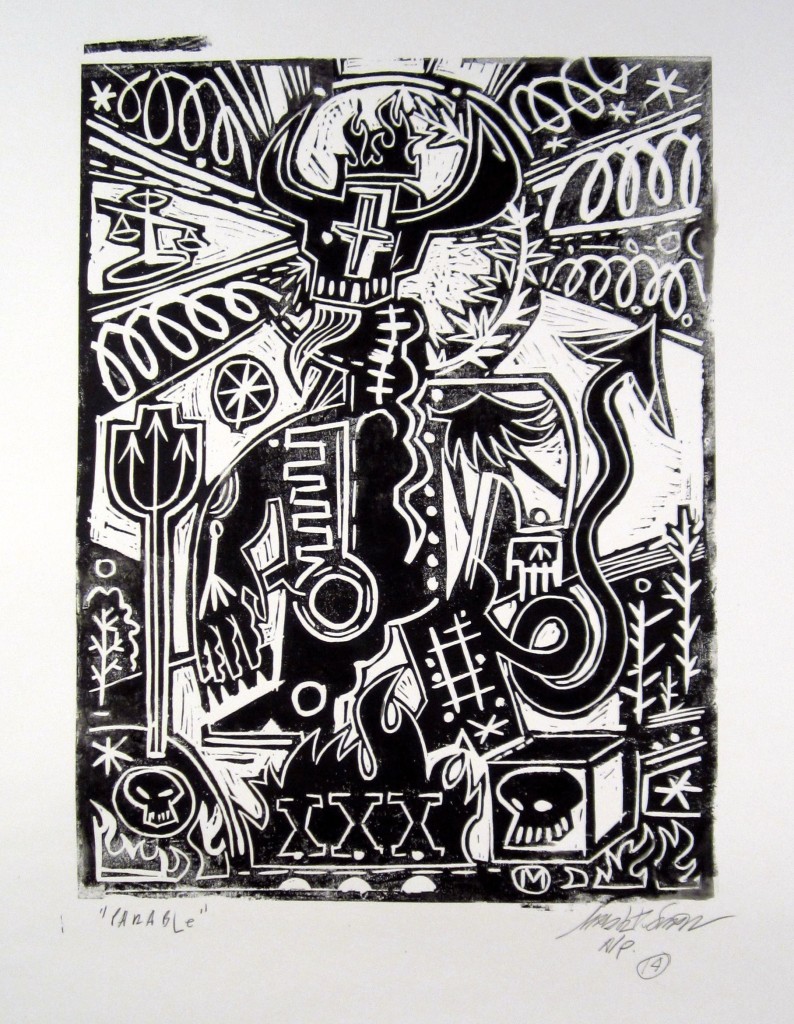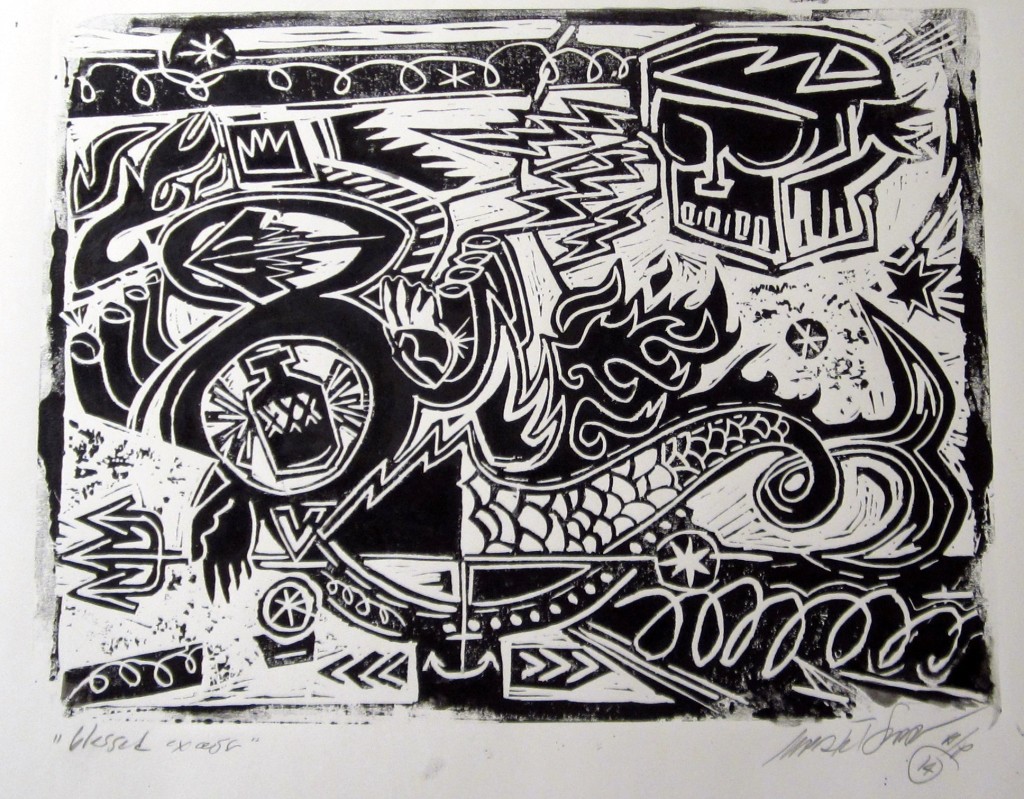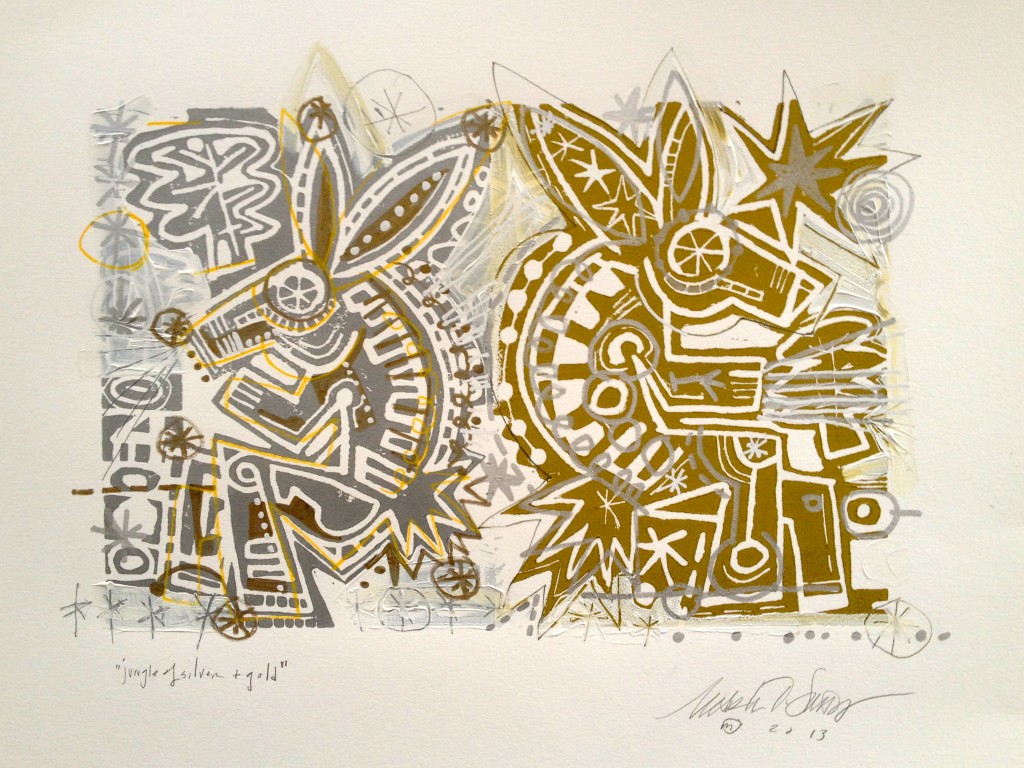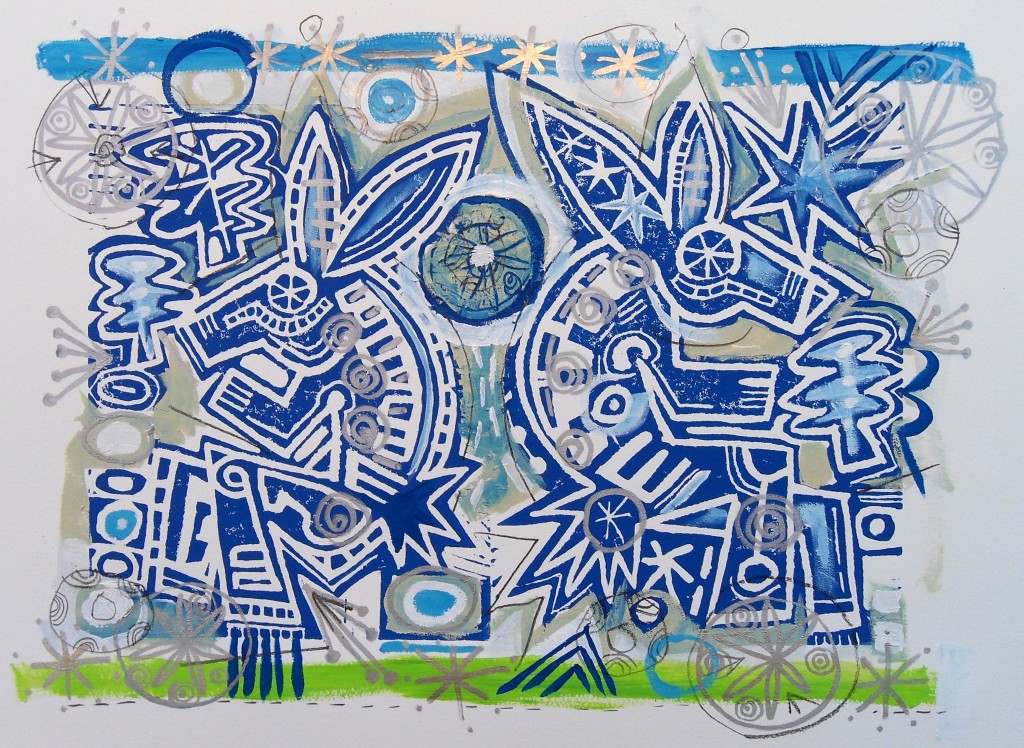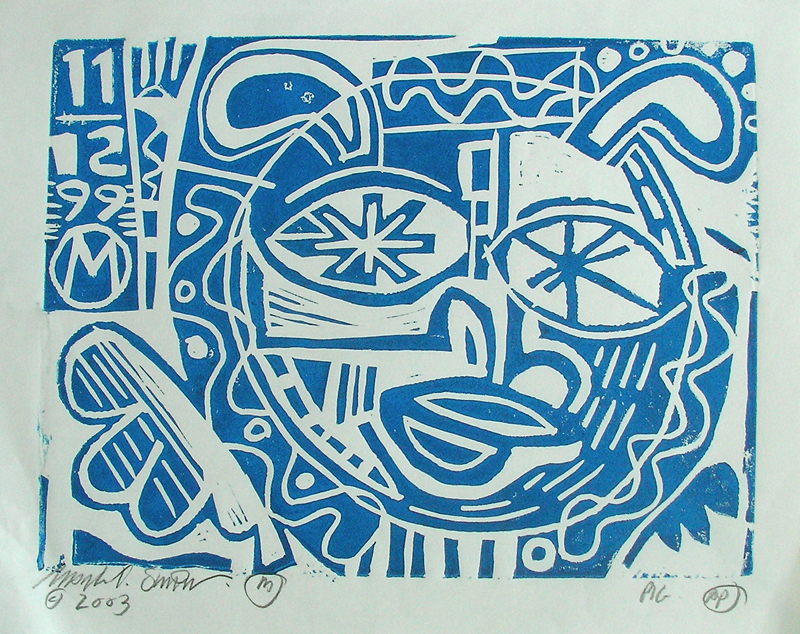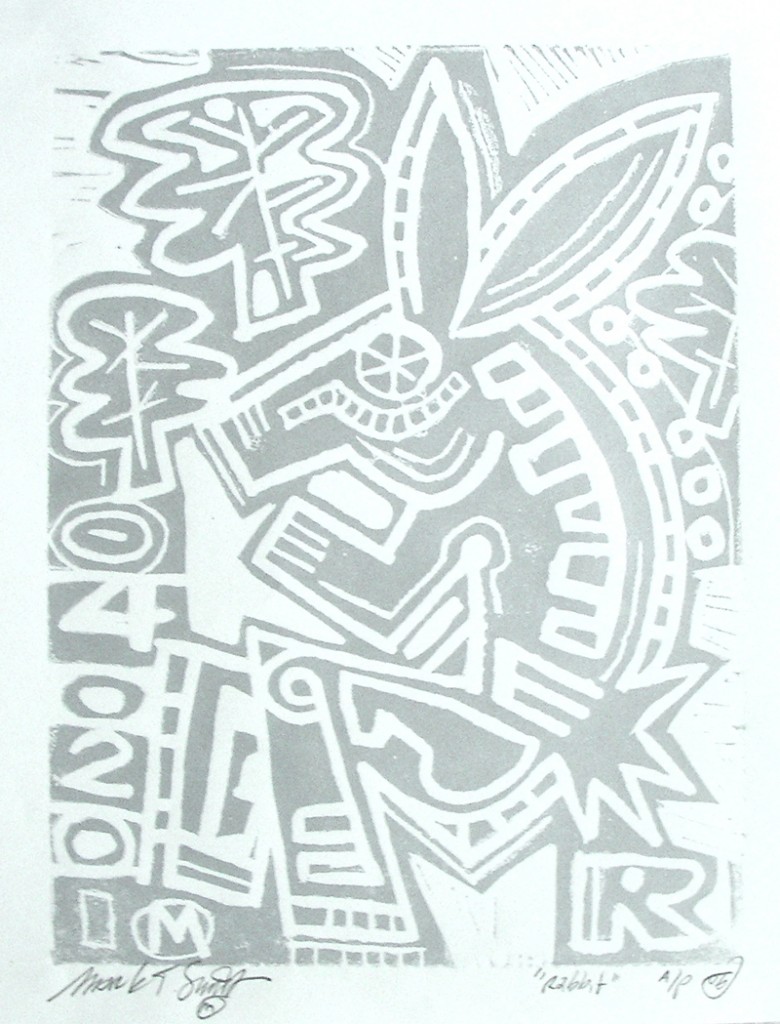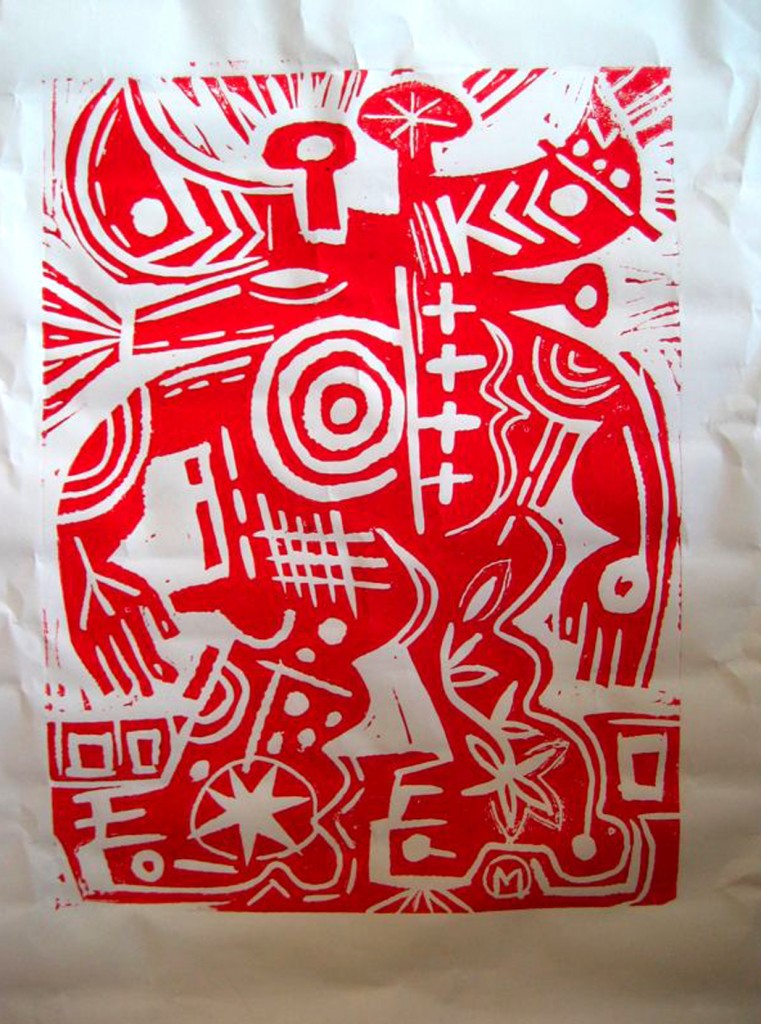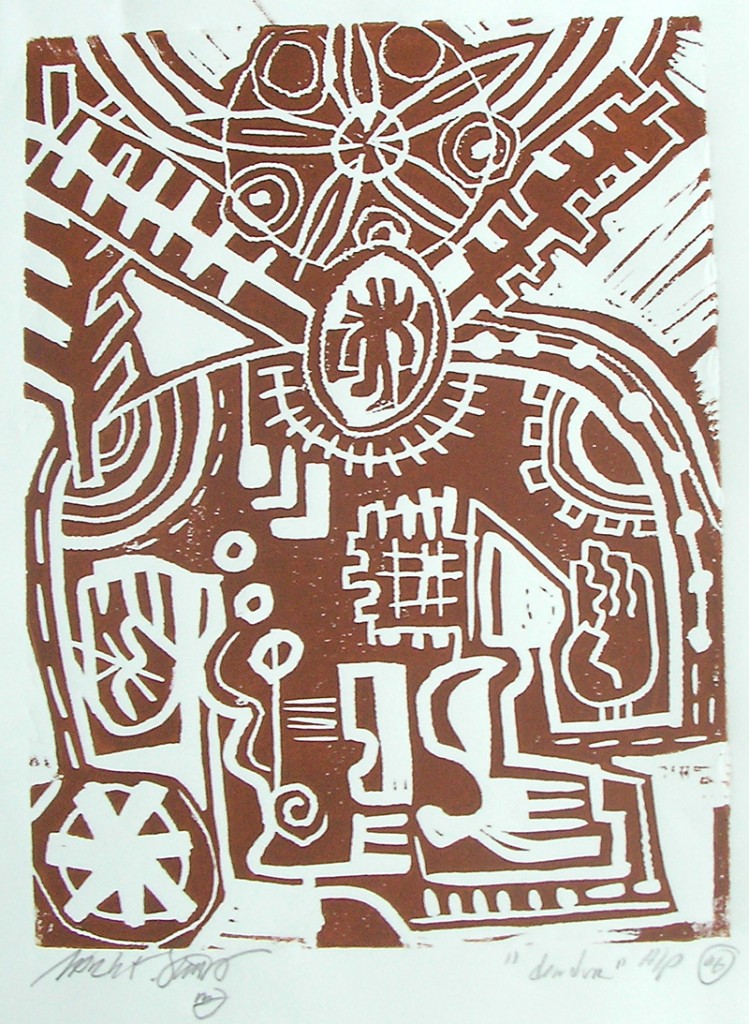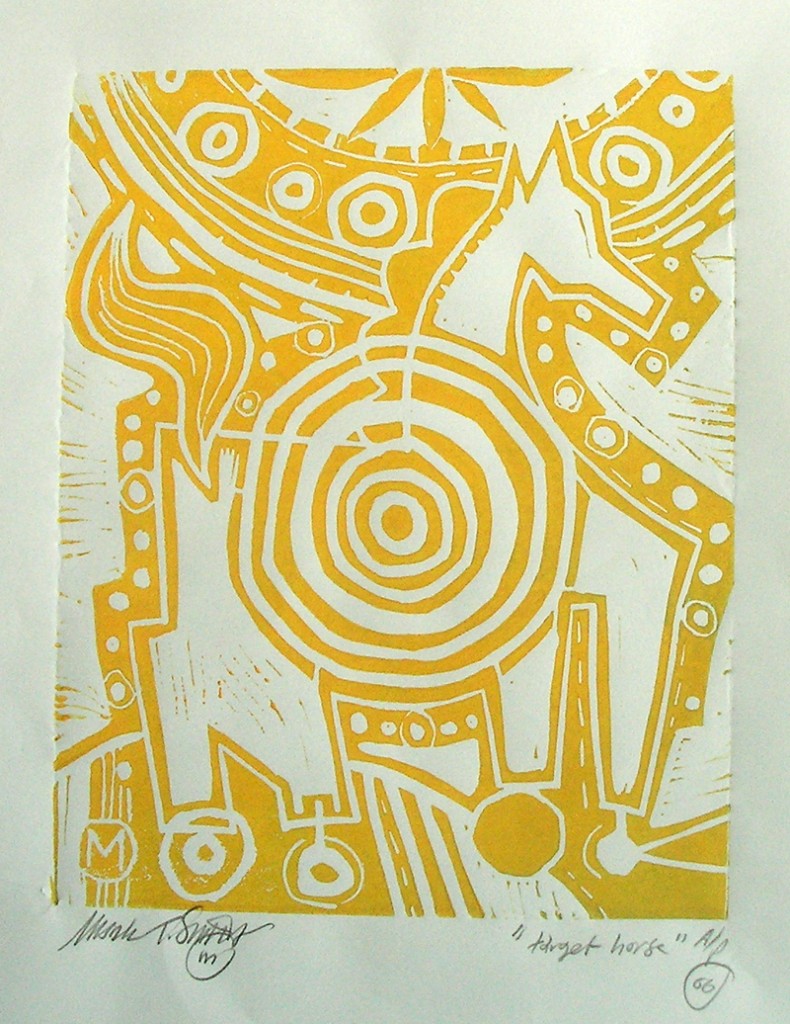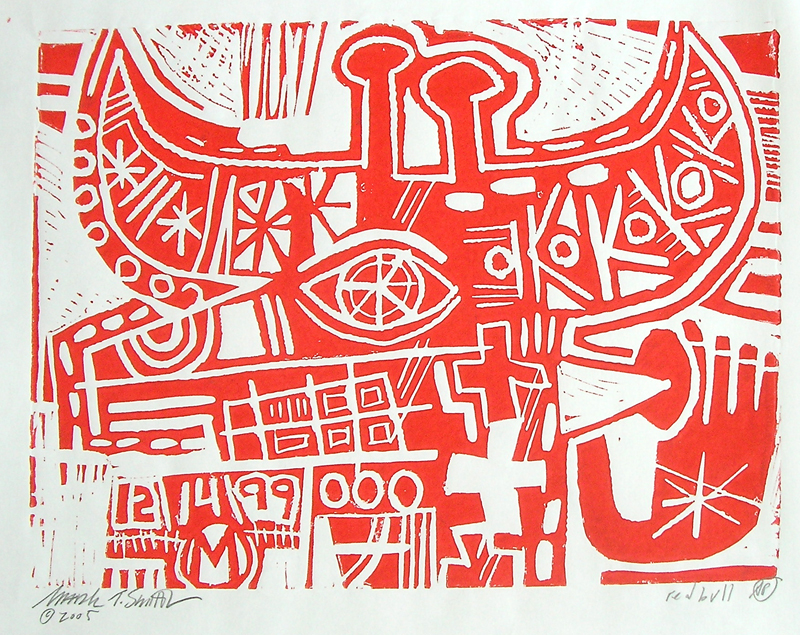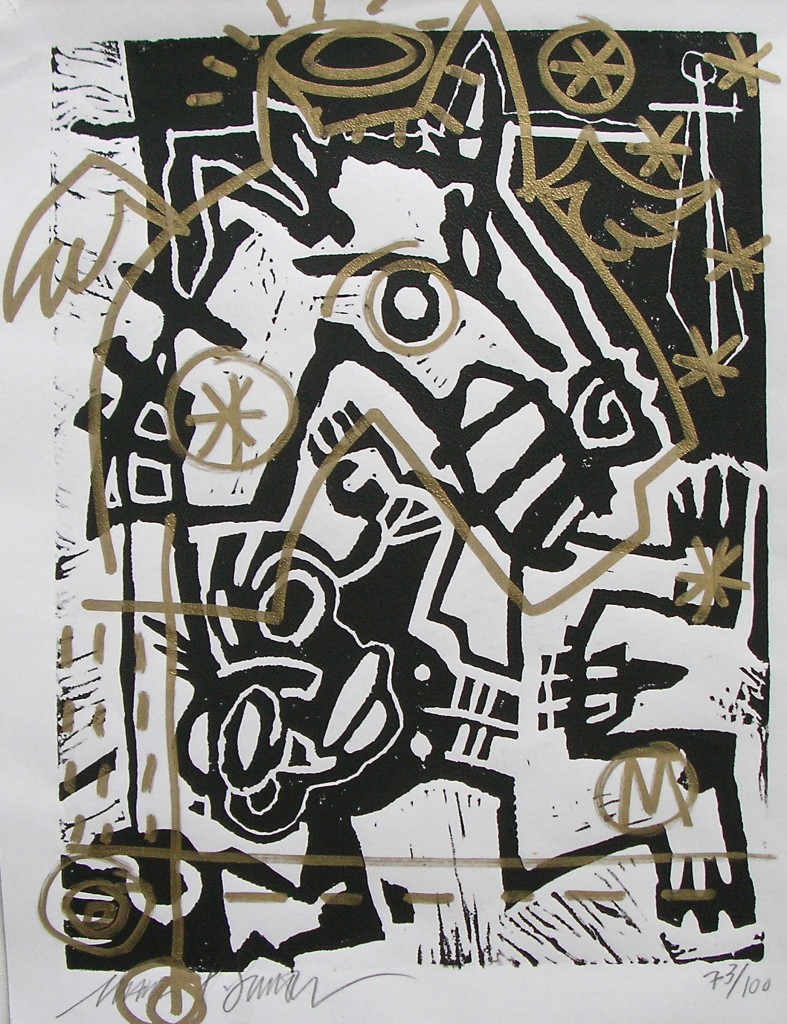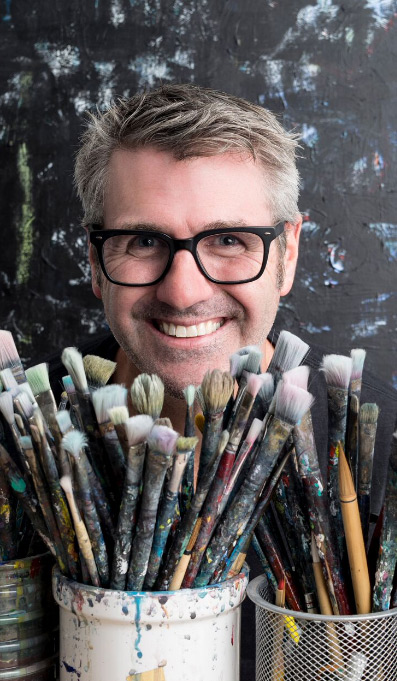Although linoleum is a floor covering that dates to the 1860s, the linocut printing technique was used first by the artists of Die Bruke in Germany between 1905 and 1913, where it had been similarly used for wallpaper printing. “Linocut” is a printmaking technique, a variant of woodcut in which a sheet of linoleum (sometimes mounted on a wooden block) is used for the relief surface. A design is cut into the linoleum surface with a sharp knife, V-shaped chisel or gouge, with the raised (uncarved) areas representing a reversal (mirror image) of the parts to show printed. The cut areas can then be pulled from the backing. The linoleum sheet is inked with a roller or (called a brayer), and then impressed onto paper or fabric. The actual printing can be done by hand or with a press.
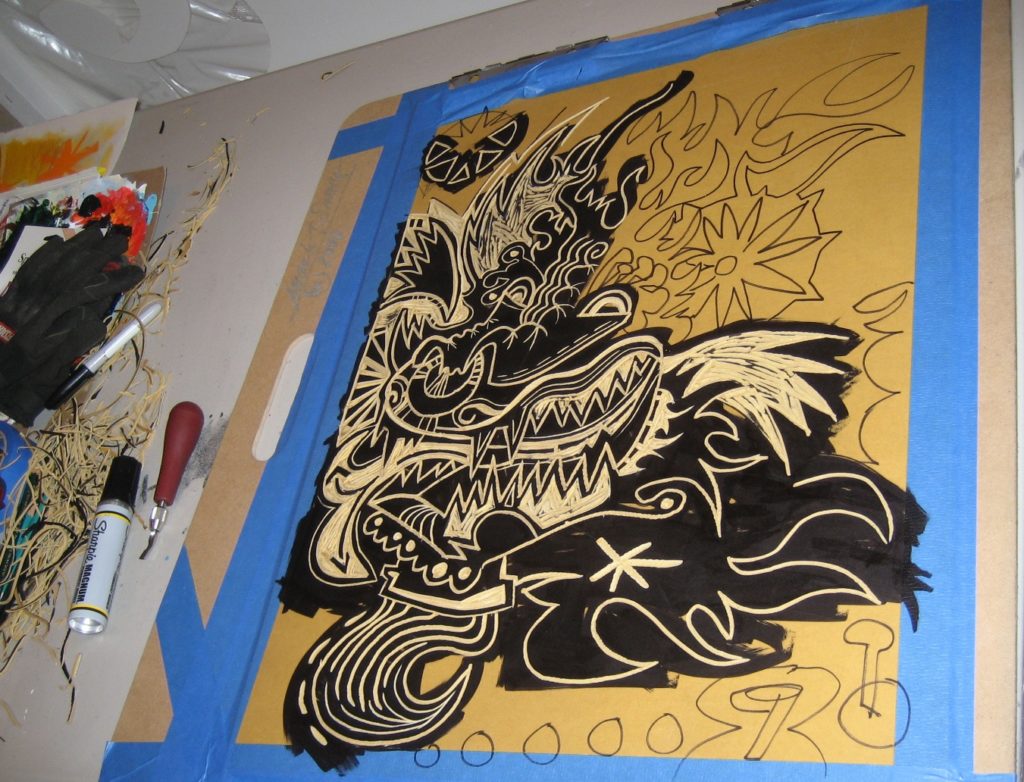
Linoleum block printing was for many years considered a “low art” or a craft. Once 20th century artists such as Picasso starting working with the medium it was elevated to its rightful place among other media and materials. Linocut is such an attractive medium to work in because it is so absolutely unforgiving. Once material has been removed from the surface of the block, it is gone forever. Thus this process is an exercise in good decision making.
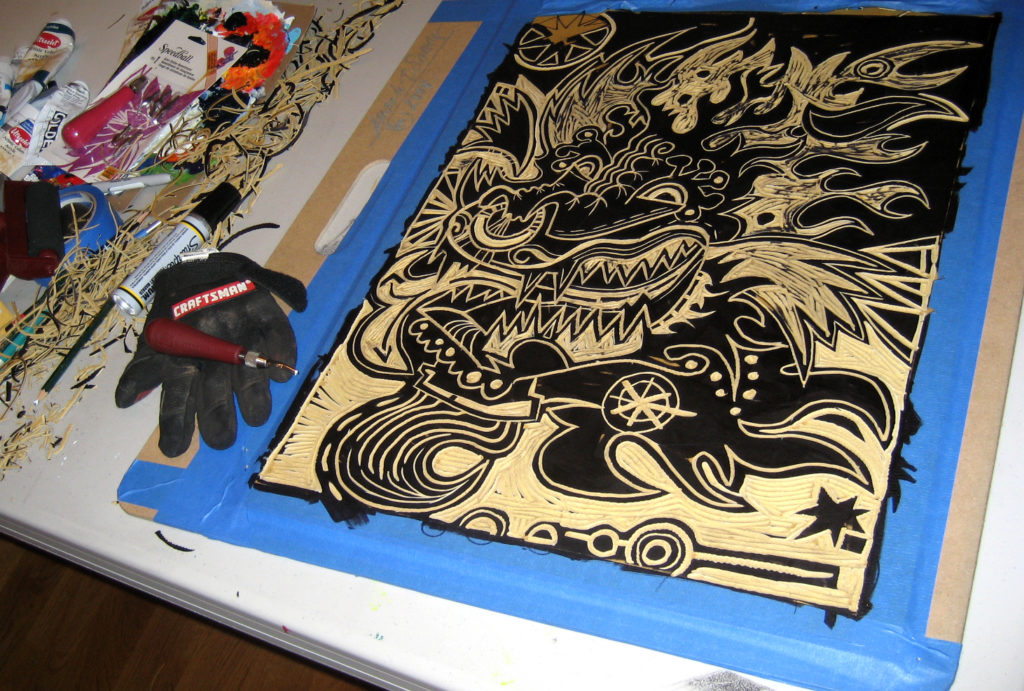
The process is relatively straight forward. Once the subject matter has been selected and vetted through a series of drawings and sketches, the subject is drawn freehand onto the carving surface. Once the drawing is exactly as the artist desires, the carving begins. The carving process is a subtractive process, meaning that material is removed and from this the image begins to appear in reverse on the block. The carving process is by far the longest part of the creation of this type of work. As the artist continues to create the image by removing material, the block is inked and printed repeatedly to insure that the linoleum block is exactly what the artist has in his/her mind’s eye. During the carving process it is not uncommon to ink and test print the block 10 or more times.
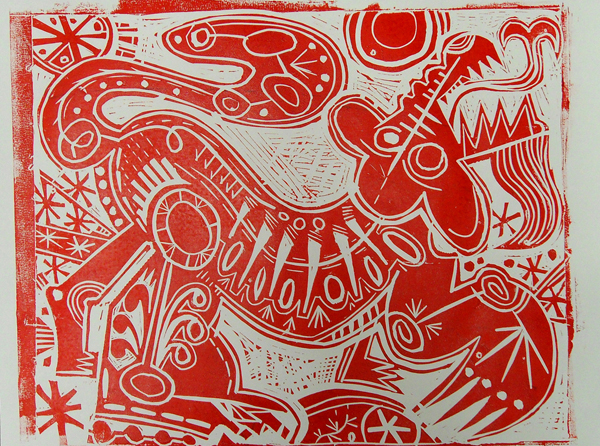
Finally, when the artist feels that the block is exactly right, the artist will print a small series of works. This run of prints is called an Artists Proof edition. This is a short run of prints, made to insure that the block will print properly on the longer edition run. In many cases small revisions are made to to the block during this process to clarify the image, or to make the printing of editions more consistent.
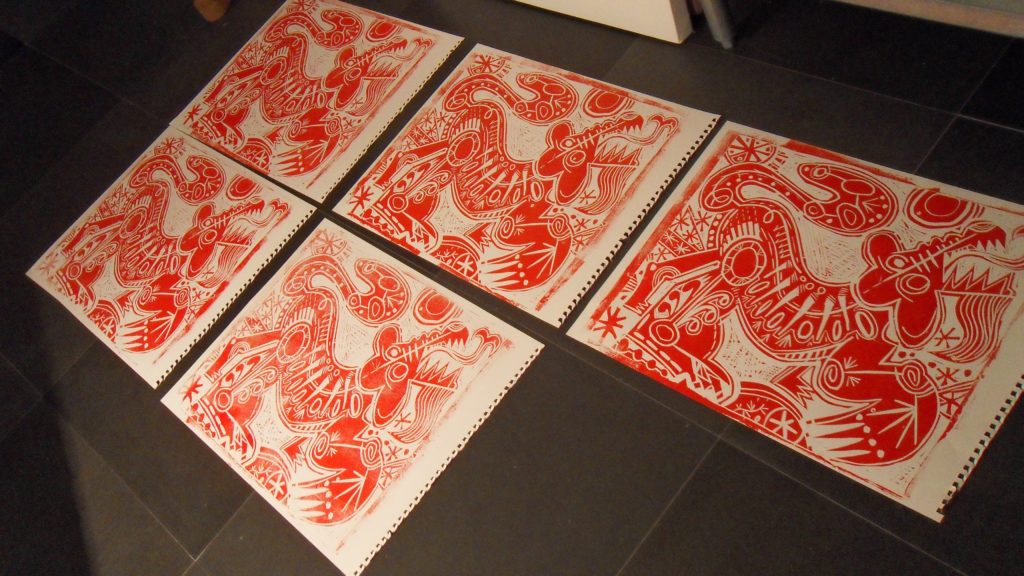
After the series of prints is completed, printed and dried, the artist might decide to return to those images and work into the prints, adding layers of other materials to the surface. These prints are called “remarques”. They are reproduced edition works that have been reworked with a variety of materials to become something more.
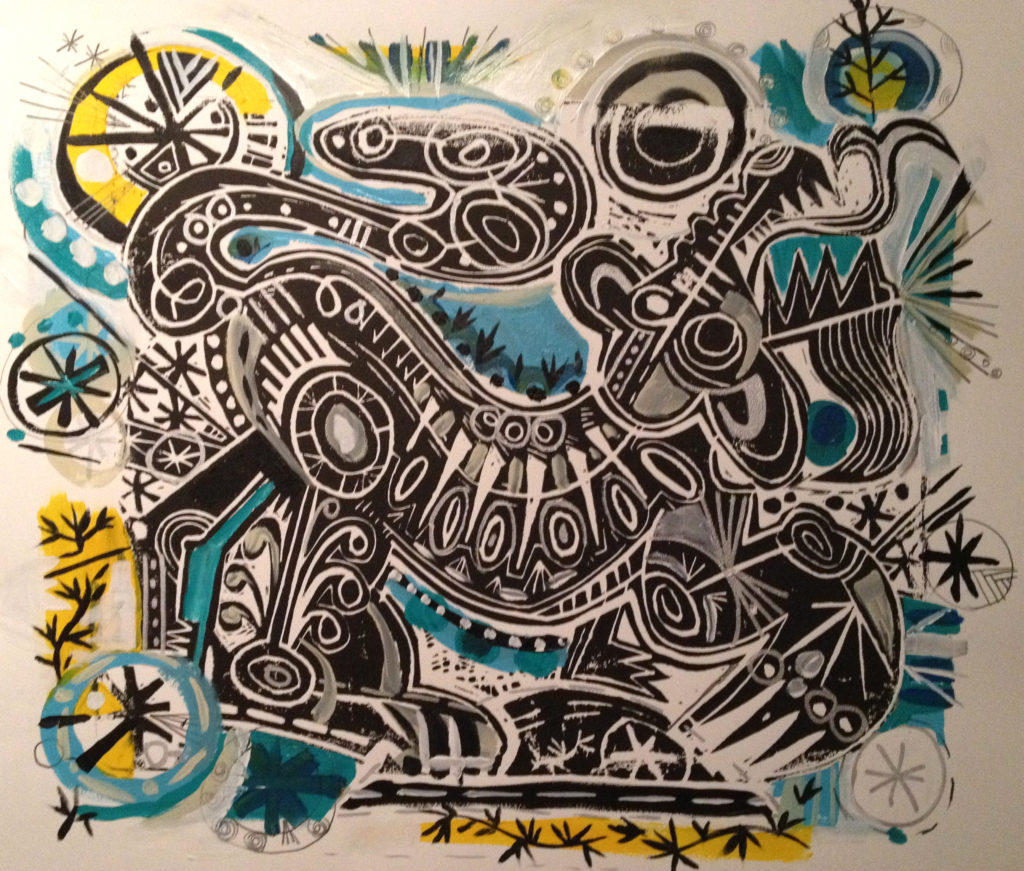
I have been working in this medium for most of my professional career. Samples of other linoleum block prints.
